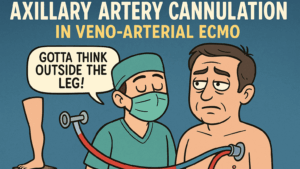The editorial by Alexander E. Berezin in the World Journal of Cardiology examines the implementation of the MANTA vascular closure device (VCD) in patients undergoing veno-arterial extracorporeal membrane oxygenation (VA-ECMO). These patients often require large-bore arterial access, typically through the femoral artery, for life-saving circulatory support. Upon removal (decannulation), achieving effective hemostasis while minimizing complications such as bleeding or limb ischemia is a critical challenge. The MANTA device, a collagen plug-based VCD, emerges as a promising tool in this context.
The paper starts by contextualizing the growing need for reliable vascular closure techniques. Invasive cardiovascular procedures, particularly those involving large-bore access like transcatheter aortic valve replacement (TAVR) or ECMO, carry significant risks of bleeding, thrombus formation, infection, and vascular damage. Traditional hemostasis methods—manual compression and surgical closure—have limitations, including discomfort, prolonged recovery, and elevated complication rates. As a response, various vascular closure technologies have evolved.
VCDs fall into three primary categories based on their mechanisms: suture-based devices (e.g., Perclose, Prostar), plug-based systems (e.g., AngioSeal, MynxGrip), and metal clip-based devices (e.g., StarClose). Each has specific indications, benefits, and limitations. MANTA is distinguished by its large bore access compatibility (12-25 Fr) and use of a collagen plug to achieve rapid closure. This design makes it suitable for critical procedures like VA-ECMO decannulation.
Berezin highlights that although the MANTA device shows comparable efficacy and complication rates to other closure devices, several studies suggest its benefits in reduced hospital stays and faster time to hemostasis. For instance, one meta-analysis of over 9,000 TAVR patients demonstrated that MANTA led to fewer primary composite endpoint events—including death, bleeding, and vascular complications—when compared with suture-based systems like Prostar XL and Perclose ProGlide.
Despite these promising results, concerns remain. The editorial notes that in real-world clinical settings, up to 20% of critically ill patients using MANTA required unplanned surgical repair due to stenosis or bleeding. Additionally, while the device performs well in selected cohorts, its generalizability to highly immobilized or severely ill patients is not firmly established. High-powered randomized controlled trials are lacking, making definitive conclusions difficult.
A key study referenced by Berezin, led by Milioglou et al., evaluated the MANTA device’s outcomes in VA-ECMO decannulation. The study found that manual compression after MANTA deployment led to effective hemostasis and minimized limb ischemia, suggesting a favorable safety profile. Notably, this study was the first of its kind and provided evidence from real-world conditions in patients who had prolonged arterial cannulation. Still, its retrospective and single-center nature calls for cautious interpretation.
Importantly, Berezin points out that although MANTA appears to offer practical benefits, especially for bedside application in ICU patients, surgical closure may still be preferable when possible. Surgical access offers controlled visibility and repair, which might be safer in specific high-risk scenarios.
The paper concludes with a balanced perspective. MANTA is considered a valuable addition to the toolkit of vascular closure, particularly for large-bore applications like VA-ECMO. However, decisions regarding closure technique should be individualized, based on patient risk profile, procedural context, and resource availability. The editorial encourages further research to define the optimal role of MANTA, especially in comparison with established suture-based and surgical techniques.
This article not only sheds light on MANTA’s potential but also invites a broader conversation about procedural innovation, patient safety, and the need for rigorously comparative vascular access management strategies in cardiology and critical care.







